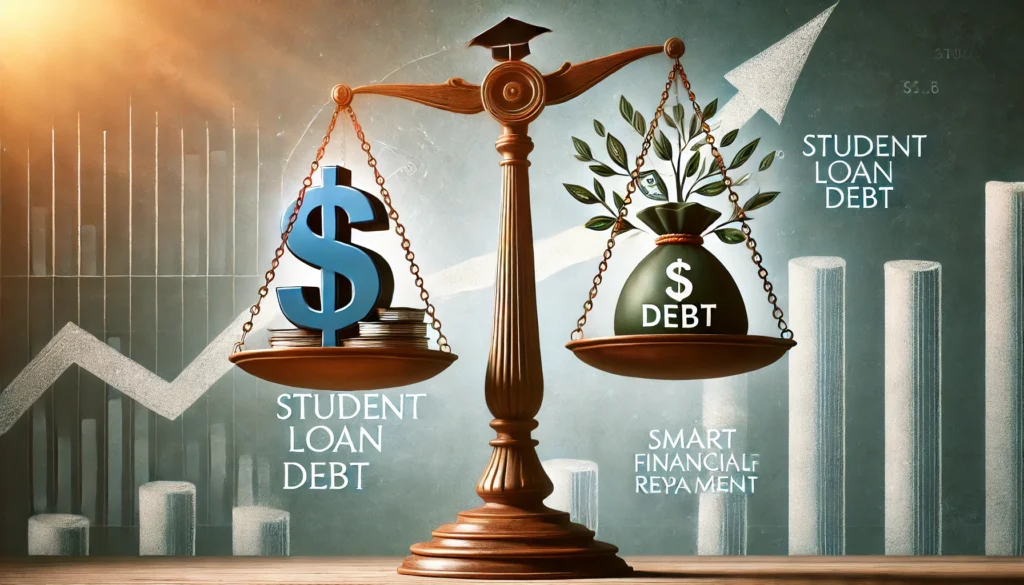The Financial Burden of Student Loans and the Need for Strategic Refinancing
Student loan debt has become a defining financial challenge for millions of graduates. With the rising cost of education, borrowers often find themselves saddled with substantial debt burdens that can take decades to repay. Traditional loan repayment terms extend over 20 or even 30 years, making it difficult for borrowers to achieve financial stability early in their careers. However, strategic refinancing options, such as transitioning to a 15-year refinance rate, can significantly reduce interest costs and accelerate debt freedom. Understanding how to leverage a 15-year fixed refi plan can be the key to saving thousands of dollars over the life of a loan while improving overall financial health.
You may also like: Best Student Loan Refinance Options in 2025: Compare Rates & Save Thousands
How Refinancing to a 15 Year Mortgage Benefits Borrowers
Refinancing a student loan essentially means replacing an existing loan with a new one, ideally with better terms. Many graduates opt to refinance to a 15-year mortgage structure because it balances manageable monthly payments with a substantially lower total interest burden. Unlike longer-term loans, which accrue excessive interest over extended repayment periods, a 15-year refinance rate ensures that a greater portion of each payment directly reduces the loan principal.
One of the primary benefits of a 15-year fixed refi is the predictability it offers. Fixed interest rates protect borrowers from market fluctuations, ensuring consistent monthly payments throughout the loan term. This stability allows borrowers to budget more effectively and avoid financial surprises that could disrupt their long-term goals. Furthermore, a shorter loan term means faster debt elimination, allowing individuals to allocate funds toward wealth-building activities such as investing, homeownership, or retirement planning.

Understanding Interest Rates for 15 Year Refinance Options
Interest rates are a crucial factor in determining the overall cost of a refinanced student loan. Interest rates for 15-year refinance loans are generally lower than those associated with 20- or 30-year terms. Lenders offer reduced rates because shorter loan terms represent less risk, ensuring a quicker return on their investment. For borrowers, securing a lower interest rate translates into significant savings over time, as less money is spent on accrued interest.
While refinancing at a lower rate is appealing, it is essential to consider various factors before making the switch. Credit scores, debt-to-income ratios, and lender policies all influence the refinance terms a borrower can secure. Those with strong credit histories and stable income levels are more likely to qualify for the most competitive rates. It is also important to compare offers from multiple lenders to ensure the best possible refinancing arrangement. Borrowers should factor in potential fees associated with refinancing, such as origination costs or prepayment penalties, to determine whether the overall savings justify the transition.
The Long-Term Financial Advantages of a 15 Year Fixed Refi
Choosing a 15-year fixed refi over a longer-term option provides long-term financial advantages beyond mere cost savings. By eliminating student debt faster, borrowers free up cash flow for other financial priorities. Reducing long-term financial obligations enhances creditworthiness, making it easier to qualify for favorable mortgage rates, personal loans, or investment opportunities in the future.
Another major advantage is the psychological relief of being debt-free sooner. Student loan debt can feel like a lingering financial burden, impacting life decisions such as career choices, homeownership, and family planning. Shortening the repayment timeline provides a sense of accomplishment and financial empowerment. Additionally, borrowers who choose a 15-year refinance rate protect themselves from prolonged economic uncertainties, such as fluctuating interest rates or unexpected financial hardships.
Strategies for Maximizing Savings with a 15 Year Refinance Rate
To maximize savings when transitioning to a 15-year refinance rate, borrowers should adopt strategic financial practices. First, improving one’s credit score before refinancing can lead to more favorable interest rates. Paying down existing debts, making timely payments, and maintaining a low credit utilization ratio are all effective ways to strengthen creditworthiness.
Second, making extra payments whenever possible can further accelerate debt repayment. Even small additional contributions toward the loan principal can significantly reduce the total interest paid over time. Borrowers who receive annual bonuses, tax refunds, or salary increases should consider applying these funds toward their student loans.
Finally, choosing a lender that offers flexible terms can make refinancing more beneficial. Some financial institutions allow borrowers to refinance multiple times, ensuring that they always have access to the lowest available rates. Others offer hardship programs or deferment options in case of financial difficulties, providing peace of mind for those concerned about future uncertainties.

Frequently Asked Questions (FAQ) on 15-Year Mortgage Refinancing
1. What are the benefits of refinancing to a 15-year mortgage? Refinancing to a 15-year mortgage offers numerous advantages, including significant interest savings over the life of the loan. A shorter loan term means you will pay off your mortgage faster, building equity at an accelerated rate. While monthly payments are typically higher than a 30-year mortgage, the reduction in overall interest payments can be substantial. Many homeowners choose to refinance to a 15-year mortgage to secure financial stability before retirement. Additionally, securing a lower 15-year refinance rate can lead to even greater savings on interest.
2. How do 15-year fixed refi rates compare to 30-year mortgage rates? Generally, 15-year fixed refi rates are lower than their 30-year counterparts, making them an attractive option for borrowers looking to minimize interest costs. Because lenders assume less risk with shorter loan terms, they often offer better interest rates for 15-year refinance loans. While the monthly payments are higher, the long-term savings can be considerable. Homeowners considering a 15-year fixed refi should analyze their budget carefully to ensure they can manage the higher payments. Those with strong financial footing can take advantage of the lower interest rates for 15-year refinance loans to maximize savings.
3. What factors influence interest rates for 15-year refinance loans? Several factors affect interest rates for 15-year refinance loans, including credit score, loan-to-value ratio, and market conditions. Borrowers with excellent credit and substantial home equity typically receive the lowest rates. Economic trends, such as Federal Reserve policies and inflation, also play a role in determining interest rates. Shopping around and comparing lender offers can help you secure the most favorable 15-year refinance rate. Timing your refinance during periods of lower interest rates can significantly impact your overall mortgage costs.
4. Is a 15-year fixed refi suitable for all homeowners? While a 15-year fixed refi offers excellent long-term savings, it may not be ideal for everyone. Homeowners with tight budgets may find the higher monthly payments challenging to manage. If maintaining financial flexibility is a priority, a longer-term mortgage might be a better fit. However, those with stable income and strong financial discipline can benefit greatly from the lower interest rates associated with a 15-year refinance. It is essential to evaluate personal financial goals and future plans before committing to a shorter loan term.
5. How can I qualify for the best 15-year refinance rate? To secure the best 15-year refinance rate, borrowers should focus on improving their credit score and lowering their debt-to-income ratio. Lenders prefer borrowers with a history of timely payments and minimal outstanding debt. Increasing home equity through additional payments or property appreciation can also enhance refinancing options. Additionally, shopping around and negotiating with lenders can help secure a lower interest rate for 15-year refinance loans. Being financially prepared and understanding the lender’s requirements can make the refinancing process smoother and more cost-effective.
6. Are there any downsides to refinancing to a 15-year mortgage? One primary downside to refinancing to a 15-year mortgage is the higher monthly payment, which may strain some homeowners’ budgets. While the total interest paid is significantly lower than a 30-year mortgage, the financial commitment can be demanding. Those with variable income or uncertain financial stability may find it challenging to sustain the increased payments. Additionally, refinancing comes with closing costs, which should be factored into the decision-making process. Homeowners should carefully assess their financial situation before opting for a shorter loan term.
7. When is the best time to refinance to a 15-year mortgage? The best time to refinance to a 15-year mortgage is when interest rates are low and your financial situation allows for higher monthly payments. Monitoring market trends and Federal Reserve policies can help identify favorable refinancing opportunities. Borrowers should also consider their long-term financial goals, such as retirement planning or other major expenses. If home equity has increased, refinancing may provide additional benefits beyond securing a lower 15-year refinance rate. Consulting with a mortgage professional can help determine the optimal timing for refinancing.
8. How do I calculate potential savings from a 15-year fixed refi? To calculate potential savings from a 15-year fixed refi, compare your current mortgage terms with prospective refinancing offers. Consider factors such as the new interest rate, loan balance, and closing costs. Online mortgage calculators can help estimate monthly payments and total interest savings. If the new 15-year refinance rate significantly reduces overall interest payments, refinancing may be a worthwhile investment. Factoring in long-term financial plans and available cash flow will ensure the decision aligns with your goals.
9. Can I refinance to a 15-year mortgage if I have an existing 30-year loan? Yes, homeowners with a 30-year mortgage can refinance to a 15-year mortgage, provided they meet lender requirements. Many borrowers choose this option to take advantage of lower interest rates and shorten their loan term. However, the shift from a 30-year to a 15-year loan results in higher monthly payments, which must be carefully considered. Homeowners should assess their financial ability to handle the new payment structure before proceeding. Consulting with a mortgage advisor can help determine if refinancing to a 15-year mortgage is the best financial move.
10. What are the closing costs associated with refinancing to a 15-year mortgage? Closing costs for a 15-year mortgage refinance typically include loan origination fees, appraisal fees, and title insurance. These costs generally range between 2% and 5% of the loan amount. Some lenders offer no-closing-cost refinancing, where the expenses are rolled into the loan balance in exchange for a slightly higher interest rate. Homeowners should compare different lender options to find the most cost-effective refinancing package. Understanding these costs will help borrowers make informed decisions about refinancing to a 15-year mortgage.

Conclusion: Making an Informed Decision on Student Loan Refinancing
For borrowers seeking to reduce the financial burden of student loans, refinancing to a 15-year fixed refi can be a game-changer. The benefits include lower interest costs, faster debt elimination, and improved financial flexibility. However, making an informed decision requires careful consideration of interest rates, lender options, and long-term financial goals. By proactively researching available refinancing opportunities and implementing smart repayment strategies, borrowers can maximize their savings and achieve financial freedom more efficiently.
Tags
student loan refinancing, debt repayment strategies, financial planning for graduates, loan interest savings, mortgage-style student loan repayment, fixed interest rate loans, personal finance for millennials, student loan debt solutions, educational debt management, 15-year mortgage alternatives, debt reduction techniques, loan term comparison, long-term financial planning, smart borrowing strategies, refinancing advantages, interest rate comparison, financial independence strategies, reducing loan burden, money-saving loan strategies, effective student loan repayment
Further Reading:
How Can You Take a Smart Approach to Student Loan Debt?
10 Tips for Managing Your Student Loan Debt
Six Smart Strategies For Managing Your Education Loans Effectively
Legal Disclaimer
The information provided in this article is for general informational purposes only and is not intended to constitute financial, investment, legal, tax, or other professional advice. The content should not be relied upon for making any financial or investment decisions. Readers are encouraged to consult with licensed professionals, such as financial advisors, attorneys, or tax experts, to obtain personalized advice tailored to their individual circumstances. The author and publisher disclaim any liability for any actions taken or not taken based on the information provided in this article.





